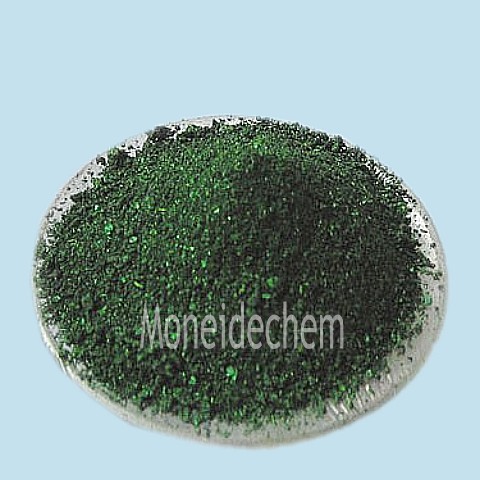モネイドケミカルズ
電話: 86-315-8309571
WhatsApp/WeChat/モバイル: 0086-15633399667
Skype: janet-honest
住所: 2-7-523 Jidong Building Materials Tangshan, Hebei 064000 China
|
化学名 |
ベーシックグリーン4 |
|
CAS番号 |
|
|
分子式 |
C52H54N4O12 |
|
EINECS番号 |
219-441-7 |
|
分子量 |
927.0 |
|
分子構造 |
|
|
詳細 |
外観: 金属光沢ボトルグリーンクリスタル付き 最大吸収波長: 616.9nm PH変化範囲:0.0(黄色)〜2.0(緑) 11.0(緑)〜13.5(無色) タングステンに対する感度: テストに合格 生物学的汚染試験:合格 硫酸灰分: 2.0% 乾燥減量: 最大3.5% 溶解度: 水に簡単に溶け、アルコール、メタノール、ペンタノール、シアン水溶液に溶けます。 梱包: 25kg/ファイバードラム
|
|
主な用途 |
生物染料として使用され、細胞または細胞組織を青緑色に染め、顕微鏡での研究に便利です。また、絹、皮革、紙の染料としても使用されます。 |
1. What is Basic Green 4?
Basic Green 4, also known as Malachite Green, is a synthetic triphenylmethane dye with a vibrant green color. It functions as a cationic (basic) dye due to its positively charged nitrogen groups, making it highly soluble in water and alcohol. This dye is widely recognized for its dual role as both a coloring agent and a biocide, particularly in aquaculture to control fungal and parasitic infections in fish. Its chemical structure allows strong binding to nucleic acids and proteins, which also makes it useful in biological staining and industrial applications.
2. Basic Green 4 Application
Basic Green 4 is primarily used in aquaculture as an antifungal and antiparasitic treatment for fish eggs and fish. In histology, it serves as a biological stain for microscopy, highlighting cellular structures. The textile industry employs it for dyeing silk, wool, and leather, while paper manufacturing uses it for colored paper production. Additionally, it has applications in analytical chemistry as a redox indicator. Despite its effectiveness, its use in food-producing animals is banned in many countries due to potential toxicity concerns.
3. Basic Green 4 Advantage
The key advantage of Basic Green 4 is its broad-spectrum antimicrobial activity, particularly against fungi and parasites, making it invaluable in aquaculture. Its intense color and strong affinity for materials ensure long-lasting dyeing effects in textiles and paper. As a stain, it provides excellent contrast in microscopic imaging. However, its toxicity and environmental persistence require careful handling and regulated use. Alternatives are being explored, but its cost-effectiveness and efficacy maintain its relevance in controlled applications.


























